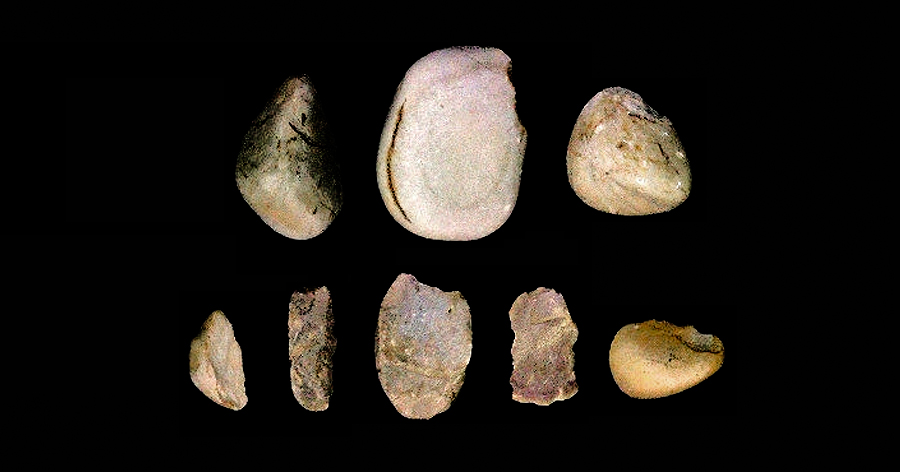



Excavations in the Spain's Cuenca province have found stone tools that date back to over one million years. Archaeologists Santiago David Domínguez and Míchel Muñoz, under the auspices of Ares Arqueologia, believe the tools maybe attributed to Homo Ergaster (2 - 1.3 mya) and Homo Antecessor (1.2m - 800,000 ya). Indeed, the tools were used by the earliest humans to settle and occupy the Iberian Peninsula.
The archaeological site itself is merely one of 20 in the region of la Meseta - the high plains of central Spain - and the team hope to discover many more clues to understand the early colonization of the Iberian peninsula by early hominids.
The excavated hewn quartzite tools were used as choppers, to cut meat and wood. These tools represent the first instances of technological innovation in human history, wherein our ancestors first began to enhance their biological abilities with the manufacture of stone tools. This speaks to an important milestone in the evolution of our ancestors. Tool production and use is thought to be intimately linked to, if not the instigator of, major changes in cognitive development; geographic ranges; and morphological features like body and brain size. Although the exact nature of these relationships remains contested, better understanding of these issues will inform our state of knowledge on subjects from the evolution of human cognitive sophistication to the timing of our genus' first use of fire or hunting.
by Bradshaw Foundation
Tuesday 21 March 2023
by Bradshaw Foundation
Tuesday 07 February 2023
by Bradshaw Foundation
Thursday 19 May 2022
by Bradshaw Foundation
Tuesday 19 October 2021
by Bradshaw Foundation
Friday 25 June 2021
by Bradshaw Foundation
Monday 09 November 2020
by Bradshaw Foundation
Tuesday 03 November 2020
by Bradshaw Foundation
Wednesday 28 October 2020
by Bradshaw Foundation
Tuesday 23 June 2020
by Bradshaw Foundation
Thursday 04 June 2020
by Bradshaw Foundation
Thursday 14 May 2020
by Bradshaw Foundation
Tuesday 12 May 2020
by Bradshaw Foundation
Wednesday 19 February 2020
by Bradshaw Foundation
Tuesday 21 January 2020
by Bradshaw Foundation
Monday 20 January 2020
by Bradshaw Foundation
Thursday 28 November 2019
by Bradshaw Foundation
Tuesday 21 March 2023
by Bradshaw Foundation
Tuesday 07 February 2023
by Bradshaw Foundation
Thursday 19 May 2022
by Bradshaw Foundation
Tuesday 19 October 2021
by Bradshaw Foundation
Friday 25 June 2021
by Bradshaw Foundation
Monday 09 November 2020
by Bradshaw Foundation
Tuesday 03 November 2020
by Bradshaw Foundation
Wednesday 28 October 2020
by Bradshaw Foundation
Tuesday 23 June 2020
by Bradshaw Foundation
Thursday 04 June 2020
by Bradshaw Foundation
Thursday 14 May 2020
by Bradshaw Foundation
Tuesday 12 May 2020
by Bradshaw Foundation
Wednesday 19 February 2020
by Bradshaw Foundation
Tuesday 21 January 2020
by Bradshaw Foundation
Monday 20 January 2020
by Bradshaw Foundation
Thursday 28 November 2019
Friend of the Foundation











